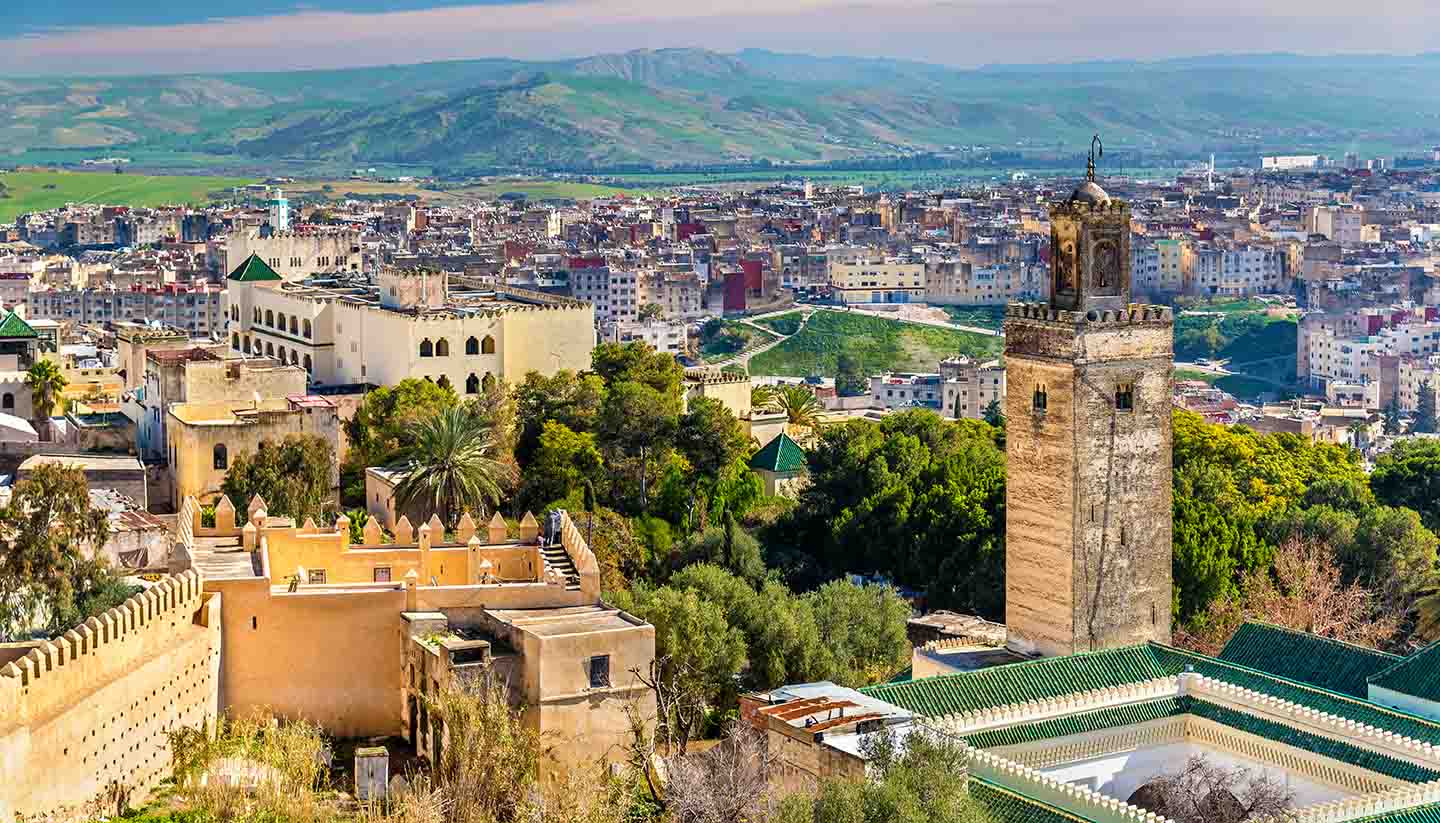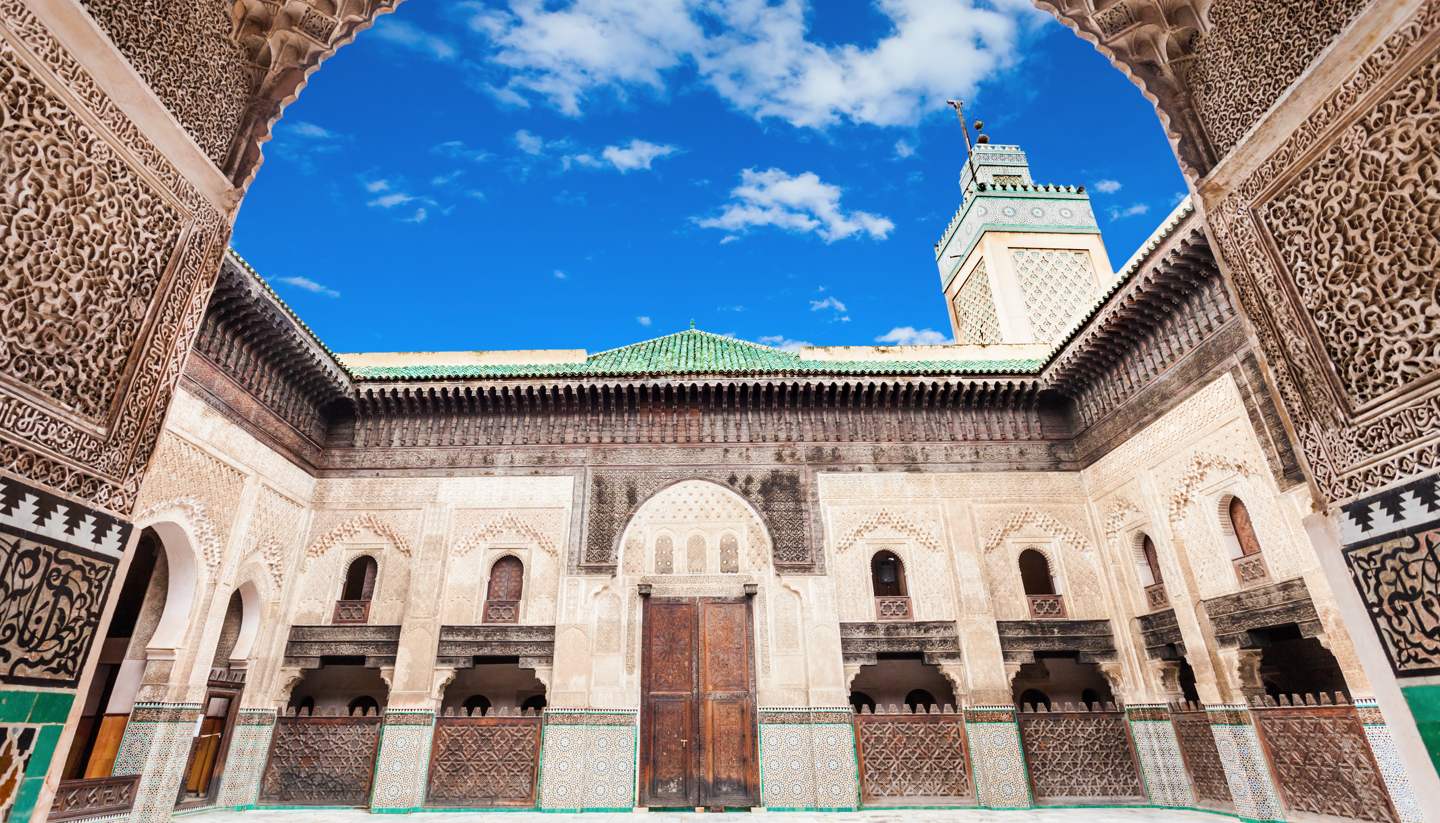Fes History
The oldest of Morocco's imperial cities, Fes was founded in 789 by Idriss I, who was fleeing the Abbasids of Baghdad. He led local Berbers in conquest of the region and established the Kingdom of Morocco, before being poisoned by the Abbasids. In the 9th century, waves of immigrants from Spain (mainly Muslim families fleeing the Catholic Reconquista) and Tunisia brought expertise and wealth to the burgeoning city.
By the middle of the 9th century, the University of Al Quaraouiyine was built, one of the largest and oldest in the world. By the 11th century, the city had a cosmopolitan population of more than 500,000 inhabitants, including Moors, Berbers, Jews, Turks and Christians, and the two settlements on opposing riverbanks established by Idriss I, and then his son, had merged.
Fes reached its zenith as a centre of learning and commerce in 1269 when the Merenids made it their new capital and its reputation as an intellectual hub began to grow. The city known as the ‘Athens of Africa’ was filled with many great buildings and monuments, including madrassas bearing a distinctive blend of Arab and Andalusian styles. It naturally became an important trading centre.
By the 16th century, the city had lost its capital status after the Wattasid Dynasty took over Fes with the support of the Turks. The city was finally conquered by the Ottomans in 1579. They moved the capital to Marrakech. But during the 18th-century reign of Moulay Abdallah, Fes became the capital once more.
In 1912, most of Morocco became a French protectorate, with Rabat as capital. The Ville Nouvelle (new town) was built, characterised by wide, straight boulevards. Despite the ensuing neglect of the medina, the oldest and walled part of the city known as Fès el-Bali was granted UNESCO World Heritage status in 1981 – the first time an Islamic and Arab city had been accorded with the title.
Did you know?
• Over 6,000 Jews were killed in Fes in 1033 in an incident known as the Fes massacre.
• There are more than 13,000 historic buildings in Fes. Among them are 11 madrassas, 320 mosques, 270 funduqs (traditional hotels), and more than 200 hammams, houses, and public ovens that are being protected and restored by the government via a new generation of skilled craftsmen.
• Fes is still regarded by most Moroccans as the historic, cultural and spiritual capital of the country.



